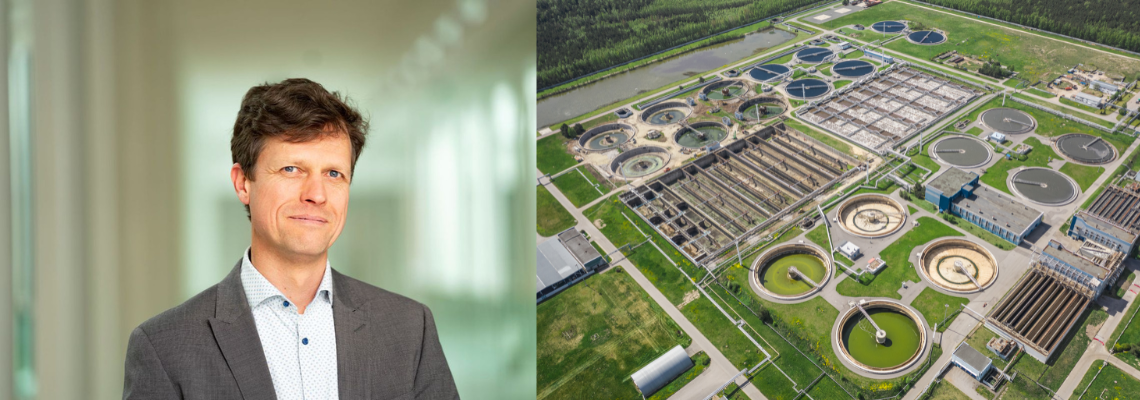Viewpoint: How mass migration impacts our water supply systems
Mass migration, either uncoordinated or coordinated, is a relevant scenario for the water industry for the coming decades. It asks for (rapid) adaptation measures, writes Dr. Peter van Thienen.
Strengthening cooperation on water management
Our water supply systems and infrastructure have an incredibly long lifetime of at least several decades and represent substantial financial value. The associated planning horizons are, therefore, also quite long. As our world is changing ever quicker (technology and our environment), the question arises to what degree this long planning horizon continues to be an asset and when it may become a liability?
The water industry has recognized the need for resilience and flexibility, and academics have developed strategies for improving our (climate) resilience over the past decade. However, many developed approaches focus on dealing with natural disasters, their impact on water supply systems, and the speedy recovery of their operation.
However, an additional class of scenarios needs to be taken more into account: (semi-)permanent state changes, in which things do not or cannot get back to the original state. Think of our environment (e.g., depletion of an aquifer with limited recharge, desertification) and our societies and urban systems (e.g., significat changes in population size). In this blog post, I discuss two scenarios of the latter category.
Uncoordinated mass migration
The pressures our changing climate and other planetary boundary transgressions will be putting on our societies may be more than they can carry. Climate change and biodiversity loss will lead to a reduction and geographical shift in food crop yields.
Increasing extreme weather (droughts, floods, extreme temperatures) may drive the population to leave their homelands, leading to uncoordinated mass migration, potential conflicts, etc. These processes' interactions and cascading effects have started to receive attention in the scientific literature.
A recent book by Gaia Vince called Nomad Century paints a scenario of comparable circumstances but also offers a mechanism to prevent the collapse scenario: coordinated mass migration from equatorial regions to mostly northern latitudes. She argues that this would save many lives and solve the challenge of maintaining an economy in an ageing society (most developed countries). She does concede that the decision process and implementation would be a challenge.
Evidence for climate-change-induced migration
There is not yet a clear consensus in the scientific community on to what degree climate change will lead to large-scale migrations. For example, even though the prediction is that most atolls will be uninhabitable by the mid-21st century, there is no evidence yet for people moving away from atolls.
Will people continue to adapt, or will there be a tipping point at which adaptation becomes increasingly more challenging, leading to migration? Researchers observe that climate-change-driven agriculture changes may increase migration for unfavored countries, though some people may be too poor to move.
Others also note that economic and political factors often contribute to migration decisions and that interactions are complex. Climate refugees do not yet fit the definition of refugees so far, affecting the rights and hiding the statistics of these people, but awareness of migration is growing
Lessons for the water industry
The time horizon dictated by our changing environment may be shorter than we would (like to) think. More than one billion people may be displaced by 2050 – in less than three decades – but we do not know if and how such a scenario will unfold. We are, however, likely to be close to or already have reached a globally averaged 2 degrees Celsius above pre-industrial temperatures at that time: well beyond our present-day +1.1 degrees Celsius "new normal" of droughts, forest fires and floodings, in yet another "new normal".
Suppose the international community, or individual national governments, decided to accommodate and prepare for coordinated mass migrations. In that case, the water industry should join the effort of physical preparation to increase the infrastructure at the destination side and downscale at the departure side). Suppose extreme weather, large-scale food shortages, or the reach of some social tipping point occurred. Similar measures may be necessary in that case, but on even shorter timescales and in a less well-coordinated manner.
We can act now! Here are four suggestions:
• Investigate and familiarize with coordinated as well as uncoordinated mass migration scenarios.
• Know your options (resources, technologies, policies) for significant upscaling total water production and wastewater processing and downscaling per capita water demand and wastewater production (for the destination side) on relatively short timescales
• Start building sufficient flexibility into systems to be able to accommodate these scenarios
• Set up risk management and a broad perspective on the effects of climate change.
We can cast aside the large-scale mass migration scenarios as alarmist, irrelevant, or unrealistic. They are not predictions, but merely scenarios, regarding the underlying drivers and response strategies. However, we cannot deny that these scenarios are plausible and cannot argue that their likelihood is negligibly low. Therefore, the logical conclusion from a risk management perspective is to prepare for a situation.
Dr. Peter van Thienen is the Principal Scientist at KWR Water Research Institute.
We promise never to send you spam and you can unsubscribe at any time!

